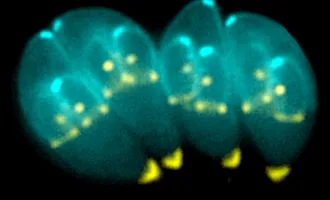New Treatment Extends Lives for AIDS Patients
When cases of HIV/AIDS first started to be diagnosed in the US in the 1980’s, it was a death sentence. The progression of the disease is caused by the efficient infection of a specific type of immune cell, known as CD4+ T cells or, more colloquially, helper T cells.
As the disease progresses, CD4+ T cell counts decrease, compromising the immune system and defining the onset of AIDS. However, not all processes underlying this depletion are well understood.
Today, HIV infection is no longer a death sentence for those with access to anti-retrovirals. These drugs suppress replication of the virus and keep viral levels low in patients.
However, as HIV patients on anti-retrovirals age, they show higher rates of age-related diseases, such as cancer and cardiovascular diseases.
Understanding HIV pathogenesis is the focus of the laboratory of Warner C. Greene MD PhD, HIV expert and Director of the Gladstone Institute of Virology and Immunology.
“We do think chronic inflammation is playing a key role [in these age-related diseases],” said Greene.
A contributing factor to the inflammation could be CD4+ T cell death itself. Some CD4+ T cells die because they are actively infected. However, the majority — roughly 95% in many tissues — die as bystander cells rather than productively infected cells.
The Greene lab has previously shown that bystander CD4+ T cell death occurs via a pathway called pyroptosis. Pyroptosis is a lesser-known form of programmed cell death that is particularly inflammatory.
The Greene lab has already elucidated many aspects of the pyroptotic mechanism, including finding that pyroptosis requires an abortive viral infection, and that it is mediated by a key enzyme, caspase-1.
However, it was still unclear exactly which mode of viral transmission causes pyroptosis – if the virus infects via free viral particles, or if the virus is transmitted directly from cell to cell. A recent publication from the Greene laboratory appearing in Cell Reports has begun to clarify the exact pathway of infection that leads to pyroptosis.
In contrast to many HIV studies, the authors used lymphoid tissue instead of peripheral blood CD4+ T cells in their experiments. Peripheral CD4+ T cells are much easier to obtain from patients; however, the Greene lab recently published in Cell Host and Microbe that these cells are resistant to pyroptosis.
“We chose to study lymphoid tissue because that’s where most of HIV replication occurs and these lymphoid tissues harbor 98% of CD4+ T cells in the body,” said Greene.
Therefore, by infecting lymphoid tissue, the authors sought to more accurately recapitulate the biology occurring in patients.
Using lymphoid tissue, the authors set up a system where they incubated tissue with either free viral particles, or with other lymphoid tissue actively infected with the virus. They then measured CD4+ T cell levels in their cultures, a measurement akin to CD4+ T cell counts taken in patients.
They found that cell-to-cell viral transmission was required for caspase-1-mediated pyroptosis and the killing of CD4+ T cells. Furthermore, the transmission required the formation of a cell-to-cell contact known as a virological synapse. The authors showed that two cell adhesion proteins involved in this synapse, ICAM-1 and LFA-1, were required to effectively kill CD4+ T cells.
Looking forward to the clinic, the Greene lab is already working to target the pyroptotic pathway. Caspase-1 is the key enzyme in this death pathway.
“One caspase-1 inhibitor has already been shown to be safe and well-tolerated in phase II human trials”,” said Greene. “One could conceive of using this drug as an adjunct to retroviral therapy to reduce persistent inflammation if ongoing low level cell death plays a role.”
By reducing inflammation, the caspase-1 inhibitor may improve the age-related diseases seen in patients, making chronic HIV a more sustainable long-term status.


